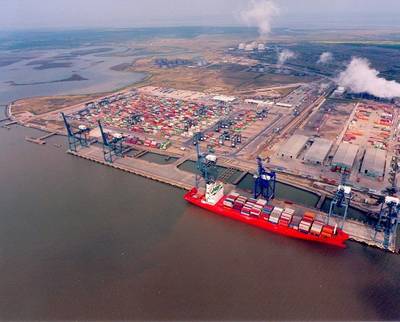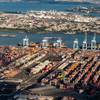Thamesport’s Woes Signal U.K. Ports Shake Up
Following Evergreen’s recent consolidation of its U.K. cargo handling needs at Felixstowe, the news that Hapag-Lloyd, OOCL and NYK intend to switch their transatlantic services to Southampton will leave Thamesport with no deep sea services. Whilst a return of some deep sea traffic might occur, Thamesport appears to be the first casualty of the impending shake up in U.K. deep sea container ports brought about by the combination of bigger ships, larger alliances – and the new London Gateway terminal.
U.K. container ports are facing unprecedented change through a combination of a major new entrant to the market for the first time in over 20 years (DP World’s London Gateway terminal) together with rapid ship upsizing, vessel cascading, carrier alliance consolidation, and more focus on hinterland connections.
This is stimulating change for all ports involved in deep sea trades and, to date, Thamesport has felt the effects hardest. Despite being a modern, well equipped and well run terminal, volumes have fallen from a peak of nearly 800,000 teu in 2008 to less than 300,000 teu in 2012.
Part of the reason is vessel upsizing in the physical sense, as Thamesport has draft restrictions in the River Medway approach channel. In February 2013 the G6 Alliance moved the Thamesport call on its Asia-Europe Loop 5 to Southampton following the replacement of 9,000 teu vessels with 13,000 teu ships.
Evergreen’s decision to concentrate on Felixstowe was reportedly due to enhanced cooperation with the CKYH Alliance on Asia-Europe strings – itself brought about by vessel upsizing. However, whilst the channel restrictions now preclude participation in the Asia-Europe trades, it does not exclude Thamesport from transatlantic and north-south trades with their smaller vessels.
Thamesport is not the only U.K. port to feel the initial effects of change in the U.K. port market. Nearby Tilbury has seen the announcement by South African service consortium SAECS that it will move to the new London Gateway terminal when it opens later this year. This is surprising in some respects as SAECS operates relatively small vessels in the 4,500-5,000 teu range and so is not a service that is being forced to move due to vessel size restrictions at Tilbury.
Moreover Tilbury has an effective competitive niche in north-south and reefer trades. The annual SAECS volume of around 65,000 teu is also modest – significant for Tilbury yes, but not much of a dent in London Gateway’s 1.6 million teu first phase capacity. However, it is perhaps an ideal customer for London Gateway to start a new terminal with – not huge volumes and not the very largest ships, so more manageable operationally as the new facility beds in.
Recent events affecting Thamesport and Tilbury are just the start of more port call shake ups as changing market factors continue to make their mark. For Thamesport and Tilbury the future focus will likely be head-to-head competition for niche deep sea services as well as short sea intra-European services. For Felixstowe and Southampton, the existing deep sea Far East-North Europe players, the impact is yet to be felt – not only from London Gateway but also from bigger ships and alliance changes.
Drewry believes recent events at Thamesport and Tilbury are the beginnings of a larger shake up in the U.K. deep sea container port market. More change to the market is inevitable as London Gateway hunts for Asia-Europe services from Felixstowe and Southampton, and bigger ships and alliance changes have an impact.
drewry.com













